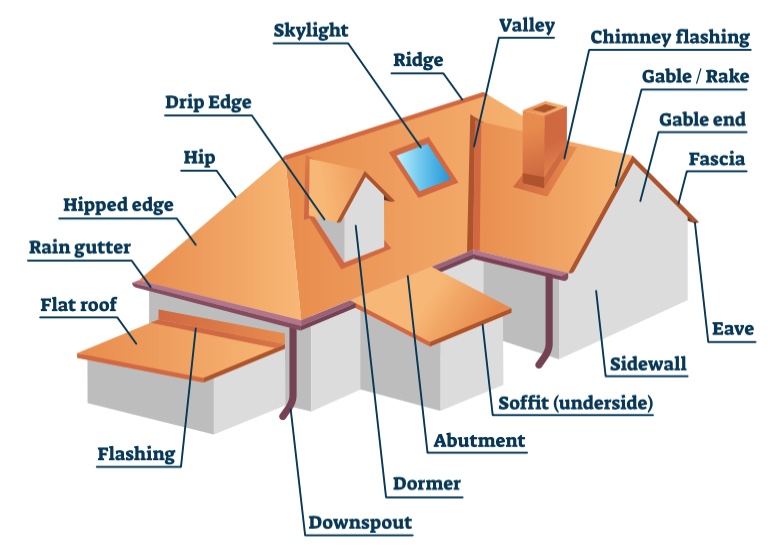Welcome to Exterior Alliance’s Guide for Ohioans. Navigating the roofing industry’s lingo can be a daunting task, especially when preparing for Ohio’s unique weather conditions. From the scorching summers to the icy winters, understanding roofing terminology is crucial for Ohio homeowners. This guide aims to break down the jargon, making it easier to communicate with professionals about ohio roofing terminology.

Key Roofing Terms Every Ohio Homeowner Should Know
- Eave: The portion of your roof that extends beyond the walls of your home, crucial for preventing water damage during Ohio’s rainy seasons.
- Rafter: Structural beams that provide support for your roof. In Ohio, ensuring these are properly insulated can help maintain your home’s temperature year-round.
- Underlayment: A protective barrier installed on your roof deck before adding shingles. This layer is especially important in Ohio to guard against water infiltration from ice and snow.
- Flashing: These thin metal pieces are vital for directing water away from critical areas like chimneys and vents, preventing leaks during Ohio’s heavy rainfalls.
- Ridge: The highest point of your roof, where two sloping sides meet. Proper ventilation here is key to managing attic temperatures during Ohio’s hot summers.
- Valley: The internal angles formed when two roof sections meet. In Ohio, ensuring these are well constructed is essential for managing snowmelt and heavy rains.
- Dormer: Protruding sections of the roof, often with windows. These add architectural interest and light, a boon during Ohio’s shorter winter days.
- Gable: The triangular portion of the wall at the edge of a pitched roof. Ohio homes with gable roofs must ensure they are properly sealed against wind and rain.
- Hip: The external angle at the junction of two slopes of the roof. Hipped roofs offer great stability against Ohio’s high winds and storms.
- Decking (or Sheathing): The base layer over which roofing materials are installed. In Ohio, this needs to withstand the weight of heavy snowfalls.
- Fascia: The vertical edge connected to the rafters’ ends, crucial for attaching gutters which are essential for managing Ohio’s intense rainfall.
- Drip Edge: A metal strip at the edge of the roof, guiding water away from the fascia and into the gutters, protecting Ohio homes from water damage.
- Vent: Openings designed to allow air to circulate under the roof. Adequate ventilation is necessary to prevent ice dams in Ohio winters.
- Ice and Water Shield: A waterproofing underlayment applied in areas prone to ice and water damage, providing an extra layer of protection for Ohio homes.
- Shingle: Roof covering pieces made from various materials. Ohio homeowners should consider durable options to withstand the region’s weather extremes.
Conclusion
Armed with this glossary, Ohio homeowners can confidently navigate roofing projects, making informed decisions that cater to the specific challenges presented by the state’s diverse weather patterns. Whether it’s a repair, replacement, or new installation, understanding these terms ensures that your conversations with roofing professionals are productive and clear. Remember, a well-maintained roof is key to protecting your home against the elements, preserving your peace of mind through all of Ohio’s seasons.

